Ninja Still Alive: Devoting One’s Life to Ninjutsu Training and Study
CONTENTS
Ninja Still Alive: Devoting One’s Life to Ninjutsu Training and Study
Ryoji Shimada, staff writer
What is your image of ninja? Their image that comes to mind for most people is of someone clad in black clothes, sword strapped to their back, hurling shuriken throwing stars, and running across the surface of water or disappearing in a puff of smoke. However, that set image is all just the creation of movies, TV dramas, and the like. The real “persons of shinobi” active during the 16th century Sengoku period were actually very different. Read for yourself and find out more…
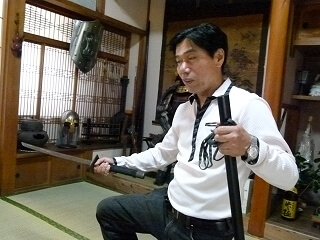
Building up His Training Since Boyhood
Jinichi Kawakami was born and raised in the Uryu district of the town of Wakasa, Fukui prefecture. He was just six years old in 1955 when he met an old man by the name of Masazo Ishida. Ishida frequently came to Uryu village from his residence in Kyoto, staying for long periods at the local kichinyado – the cheapest class of traditional Japanese hostelries – and making a living as a peddler selling medicines and other goods. Ishida was also a master of Koka-ryu ninjutsu3. Before they knew it, the two had entered into a teacher-student relationship and Kawakami began learning ninjutsu.
“He taught me how to clamber up houses and cliffs all over the village, skillfully jump down from high places, and how to infiltrate a house via the roof! I also studied how to submerge myself underwater, and the varieties and usages of poisonous and medicinal herbs found while scurrying around the mountains,” Kawakami recalls.
Of course, Kawakami was also instructed in disciplines such as the methods of various forms of martial art and strategy. At that time, Masazo Ishida was thought to be around 70 years old, but it seems he was able to masterly perform all manner of techniques in order to show them to his disciple. In addition, all of Ishida’s knowledge was stored in his memory and passed down to Kawakami orally.

Although Ishida’s household was in Kyoto, his ancestors were of samurai (warrior) lineage in Koka, Shiga Prefecture. When the Koka Imperial Corps were set up during the bakumatsu – the closing years of the Tokugawa shogunate and Edo Period (1853-1867) – the ninjutsu that had been passed down to each household, including the Ban household which was of ninja lineage, was supposedly gathered together and the techniques and knowledge re-learned by all. This had been passed on from generation to generation until it reached Masazo Ishida. The name of this faction of ninjutsu was “Koka Shinobi no Den.”
At the age of 18, Kawakami became an instructor and was permitted to call himself the 21st generation teacher of Koka-ryu Ban-to ninjutsu. He continued learning ninjutsu from Ishida until he was around 19. Why did the elderly Ishida, whose home was in Kyoto, journey out to Uryu (about 50km away from each other) and stay there frequently for long periods? Why did he pass his ninjutsu knowledge on to Kawakami? The young Kawakami rarely played with other children his own age. Ishida and Kawakami likely got on well and overcame their age difference because they both loved solitude. By instructing the young Kawakami, who took on his training earnestly every day, perhaps Ishida felt he was preserving ninjutsu, which was in the process of decline, for the next generation. We cannot ascertain the feelings of the deceased Ishida. However, with Kawakami taking over his mantle, the fact that many of the techniques and knowledge of shinobi have been passed through to the 21st century is in no doubt.
Aim of Establishing “Ninjutsu Study”
Even after graduating from school, Kawakami continued his training while working for a company. “After coming home from work at nine or ten o’clock, I’d hurriedly have something to eat and manage to train or study for a few hours before going to sleep late at night. Then I’d wake up early in the morning and go to work again. That was my daily pattern,” Kawakami recalls of that time. Naturally, he was only getting a few hours of sleep, but Kawakami says that he never let up on his practice no matter how tired he got. While he was doing this, his mastery of ninjutsu became known to the outside world little by little and people also started visiting him with the hope of becoming his disciple.
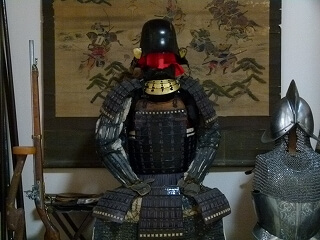
However, Kawakami does not teach just anybody. In fact, he turns away all requests at first. Only those who still have the passion and will to learn despite Kawakami’s rebuffs are accepted as his disciples. This is because ninjutsu training is extremely severe and Kawakami knows that those who begin training just out of curiosity are never in it for the long run.
Thirty years passed. Kawakami, who was by then in his 50s, retired from the company he had worked for. He firmly resolved to devote the latter stages of his life to ninjutsu.
At the time of his retirement, Kawakami was asked to become the honorary curator of the Iga-ryu Ninja Museum in Iga City, Mie Prefecture. As some readers may be aware, Iga City has made efforts to publicize and spread word of its ninja culture as one of its policies toward regional revitalization. As a part of this activity, Iga City appointed Kawakami, the leading figure in ninjutsu.
Some people may find it strange that Kawakami, an exponent of Koka-ryu ninjutsu, should be involved with Iga-ryu. However, Koka and Iga were never originally opposed to each other. In fact, there have been many alliances between them and geographically they are situated next to each other. However, during the course of his bid to unify Japan, Nobunaga Oda – a powerful feudal lord – attacked Iga in a bid to suppress the renegade province. At the time of this event, which is known as the Tensho Iga rebellion (1579-1581), the majority of Koka warriors and a section of Iga warriors joined Nobunaga’s side, so the image remains of the two sides opposing each other. In addition, Iga and Koka are often depicted as mutual enemies in movies, TV dramas, and the manga world, which helps spread this general image of them. Actually, as schools of ninjutsu, there are no sizeable differences between the two.
As an extension of his tie-up with Iga City, Kawakami was offered the chance to give lectures hosted by Mie University, a national university, which was setting up an industry-government-academia cooperative. As the exchanges between Kawakami and persons connected to the university deepened, the university brought up the subject of whether the two sides should press ahead with research into “ninjutsu studies” – i.e. ninjutsu as a genuine academic discipline. It seems Kawakami was surprised by this suggestion at first, but came to think that a good chance had come his way. Until then, the existence of ninja, their history, and ninjutsu itself had hardly been spoken of in an academic context. On the contrary, some scholars even denied the existence of ninja.
Perhaps because ninja undertook secretive work, hardly any records of them remain. There are extremely few written historical records with a high degree of reliability that are related to ninja. But even looking at the few historical records currently in existence, there is no doubt that there were at the least some persons whose activities were “ninja-like.” However, as substantiating this is difficult, the academic world has avoided the subject until now.
Kawakami thought that he should take this opportunity to continue research into ninja and firmly prove their existence to the academic world. At the same time, he established the study of ninjutsu itself with the additional aim of ensuring that it would not fail to be passed on to later generations.
These are the events that led to Kawakami being welcomed as associate professor at Mie University Community Research Cooperation Center and embarking on a new stage of his life.
SIDE BAR: Ninja Training Camp in Shiga, Japan
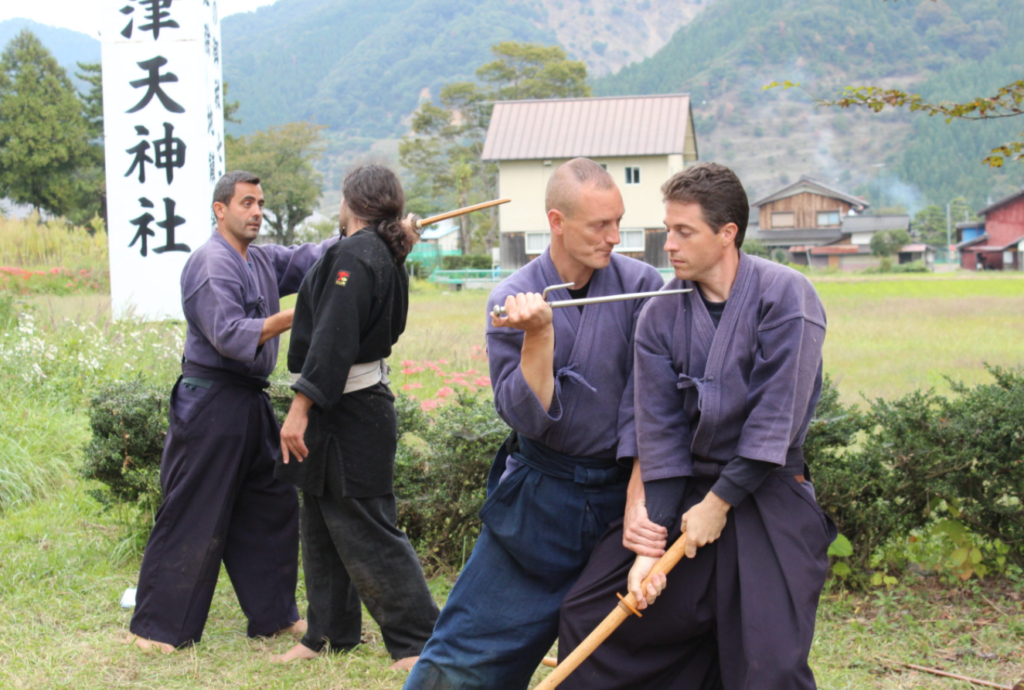
They step aside swiftly to avoid a straight downward sword attack from their enemy and take one step forward to stab a jitte (a short metal truncheon) to his throat. The motion is done in a blink of an eye. Or grabbed by the lapels, they pound their fists strongly to their enemy’s elbow joints and kick his abdomen at the same time.
These life-and-death movements are practiced in a place of scenic beauty with mountains and a large lake. What a contrast! All of the trainees look very serious, but you can’t hear their shout but only their hard breathing from time to time. It seems all secretive like ninja.
Nine-day concentrated training to toil ninja techniques held annually in Takashima-city, Shiga Prefecture in October, 2012, was intended mainly for non-Japanese, all of whom have a dream to become an authentic ninja.
Looking at the brief training schedule, you may find words difficult to understand what they do about. Double breath, kotodama (spirit of words), kongotai (solid posture), koppo-jutsu (bare hands technique), torinawa-jutsu (rope technique), sui-jutsu (swimming technique), hishingyo (climbing, jumping, crossing, etc), ju-jutsu (magic technique), etc. “These are the martial techniques handed down from Koka region (in Shiga Prefecture). They are also the basic skills required as samurai (ancient warrior),” says Jinichi Kawakami. “This martial art is only fraction of ninjutsu.”
According to his definition, ninjutsu is the comprehensive techniques such as espionage or reconnaissance, machinations, surprise or night attack, perturbation and so on to achieve a certain collective purpose. In this thinking above martial techniques are only used mainly when confronting directly against their enemies. In addition, the purpose shouldn’t be personal but collective one like surviving one’s own small village in a warring period for example. If it is a personal aim, it would become a criminal act like theft. And ninja is the ones who maneuver those comprehensive techniques as occupational abilities and work to attain the goal.
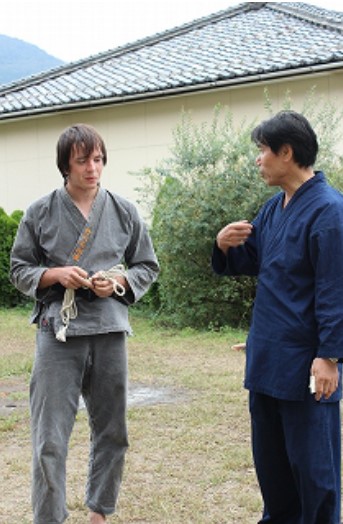
“They do anything to survive. If they think they can’t win, they don’t fight, like, ‘if you can’t beat’em, join’em.’ They have psychological skills. They use fire to distract an attention of their opponents or use medical herbs as a hemostat. Ninjutsu is also an integrated survival techniques composed of various skills and knowledge,” says Kawakami. He thinks there is a misunderstanding about ninja especially outside Japan. Non-Japanese often liken ninja to ancient assassins or spies. But they explain only part of true ninja.
However practicing on how to conduct night attack or how to do espionage without modern technologies is something unrealistic. So this annual training focuses on basic samurai martial arts, called bujutsu which are given lessons during the daytime. Those knowledge base techniques like deceiving or mnemonic techniques, herbal medicine knowledge, etc or some skills unrealistic to learn like guns or using fire are taught in the night time verbally or text base.
“Everyday I get up before 7 am and until 9 I review the training I learned the day before. Between 9 and 12, there is a formal class. There is a lunch break between 12 and 2 pm. From 2 to around 6:30 pm there is an afternoon class. There is an evening break until 8 and the knowledge lecture is given for 2 hours after that.” So explains 35-year-old Marco Palomar from Spain. This is his fifth time to participate in this training camp. He works as a surgeon professionally back in his country. He trained Judo and other martial arts since he was a child, but took an interest in ninja so much and now he trains only ninjutsu. “Ninjutsu has an old history and there are tons of techniques which intrigue me the most,” says Palomar. According to Kawakami, ninjutsu was developed around the warring period between 15th and 16th century. Koka and Iga schools became famous since both of which are close to the ancient capital, Kyoto, so latest methods or expertise could be obtained which would pile up as deepened knowledge and various techniques.
“Not only judo or karate, ninjutsu is getting popular,” replies by Jose Defez, a 40-year-old policeman from Spain, after being asked by the popularity of ninjutsu in his country. He has participated in this training camp since nine years ago. He finds it the most difficult to maneuver a sword especially and says, “This is very difficult but also most interesting.” Even if it’s his ninth time, he learns something new every time and constantly takes a note. “I take a note, so that I can practice myself back in Spain.” The instructor, Yasushi Kiyomoto, says, “We assume a real fight, so repeating a movement again and again until we actually do it without thinking it is necessary.” Practicing everyday is something must be done to acquire a real skill. So every trainee diligently take notes.
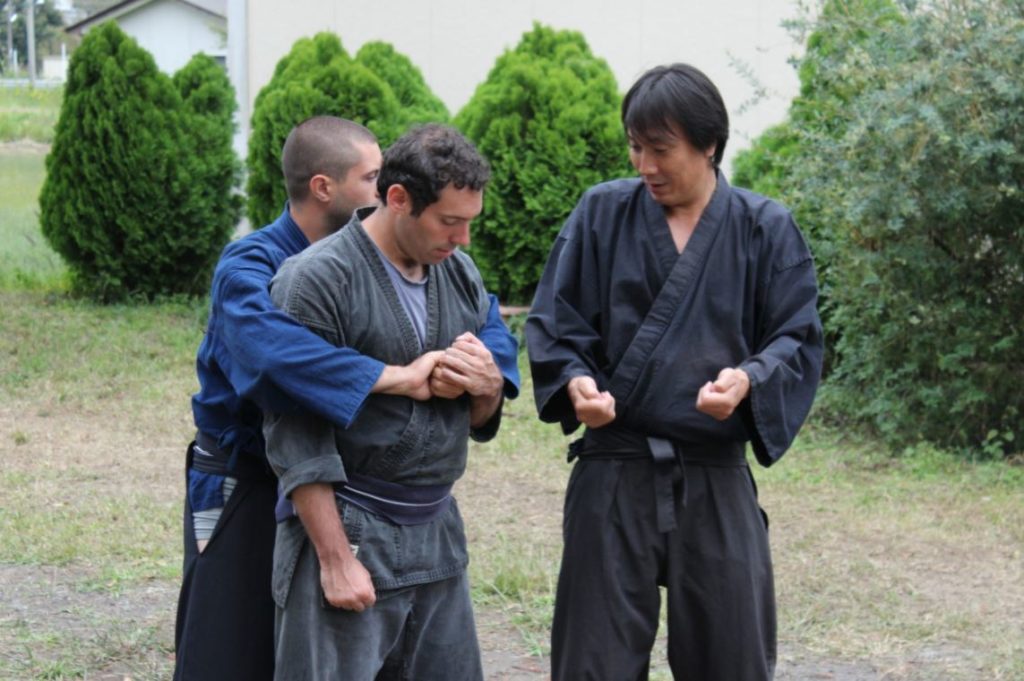
Kiyomoto (left) teaches how to strike back when assaulted from behind. 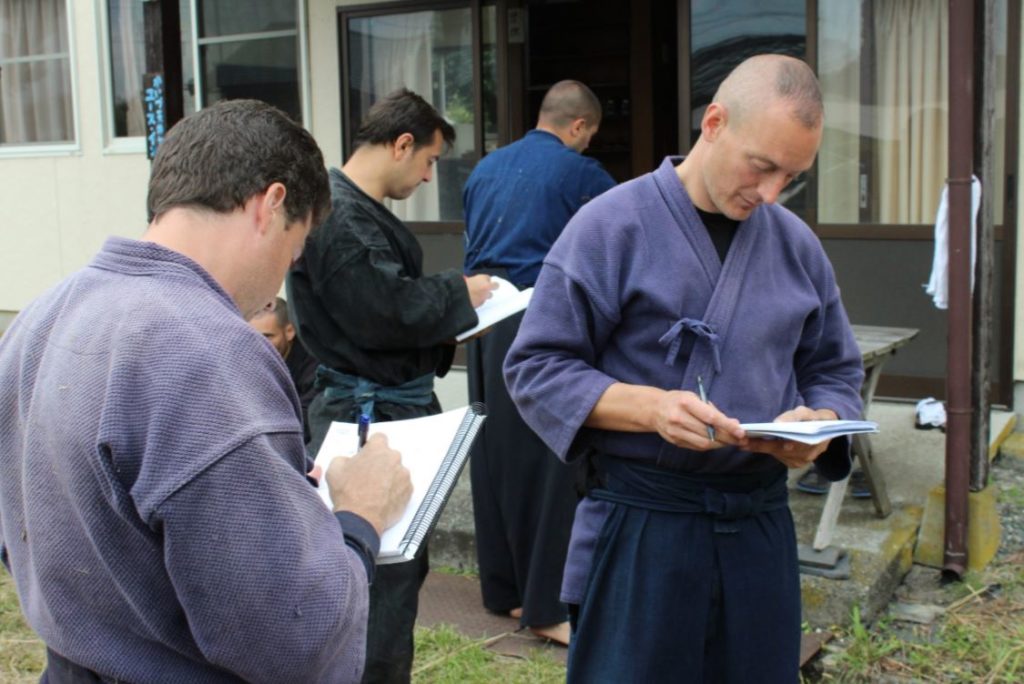
Trainees take notes constantly.
The oldest participant is a 50-year-old Japanese, Hiromasa Tsuyuki. He holds many dan (rank) in various martial arts like jujutsu, bo-jutsu (staff weapon techniques) or iaido (sword techniques). But this is his first try in ninjutsu. “It is on a completely different level and very high-level. It was developed in mountainous district and not one-on-one but you against 10 or more, so the techniques are vital, wild and yet clever,” says Tsuyuki. “Other Japanese martial arts were mostly systematized during the peaceful time of Edo period (1603-1867), so usually you fight one opponent at a time much like a present-day sports. But ninjutsu was developed during the warring period, so the techniques can be applied with no matter how many opponents are.” He finds there is a movement never or rarely conducted in other martial arts. “Falling and attacking simultaneously, doing backward somersault to untangle the opponent attack or killing at one blow techniques are eye-opener. They never give up, either. Because if they give up, it means death.” This real live or die circumstances must have developed a real fighting method. But at the same time, Tsuyuki points out also the training is good for health. “The movements are very natural and reasonable. If you do them properly, there is no burden on your body. Eight days has passed now, and already I feel my bodies light and nimble. I guess that’s because I had to use parts of my body I rarely use on a daily life.”
Kawakami’s current activities are vying in on this same result, saying “After systemizing the whole ninjutsu picture, I discern things which can be learned today and not. Using poisons is not legal and deceiving someone is unethical. But practicing body movement can be applied for health or body protection against a burglar for example. Or having an authentic lesson course for throwing shuriken or running on a rugged terrain can be intriguing for some people and which might be used to revitalize a local region. Anyway, having a whole ninjutsu picture is the first step forward.”
But he laments very few Japanese learn ninjutsu and hopes that they take a new look on it. “Japanese are better at making a poker face. Not sending true feelings, but they can laugh for example. They can sense what the others are thinking and read the atmosphere sensitively. Ninjutsu was born in Japan, so Japanese have an edge to learn it readily.”
Shinobi: Part of the “Art of War”
Mention “ninja” and the image that comes to mind for most people is of someone clad in black clothes, sword strapped to their back, hurling shuriken throwing stars, and running across the surface of water or disappearing in a puff of smoke. However, that set image is all just the creation of movies, TV dramas, and the like. The real “persons of shinobi” active during the 16th century Sengoku period were actually very different. The ridiculous way in which some of these ninja came to be depicted is one reason why scholars tend to deny their existence, and this is the point that most concerns Kawakami.
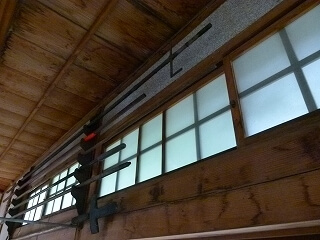
Firstly, misunderstandings surrounding the fundamentals of ninjutsu need to be resolved. Ninjutsu was not originally a strange magic-like battle tactic. It would be better understood as a military strategy activity or part of the “art of war.” In short, ninjutsu refers to a range of techniques and knowledge that were actually used in the conflicts that raged throughout medieval Japan. Examples include intelligence gathering and espionage methods, how to sneak into enemy territory, and especially the unique combat methods known as yashu and kishu (“night attack” and “surprise attack”). Persons skilled in these techniques were known as “shinobi” or “persons of shinobi.” In this sense, ninjutsu is more about actual combat than other military strategies that include theories worked out from behind a desk.
For example, a general should always try to probe for enemy information before the battle. Ideally, there would be no battle; the problem would be solved without any blood being spilt. To that end, the enemy may be diplomatically placated or bribes may be paid. Controlling an opponent’s mind using methods like these also falls within the remit of the ninja. If war should actually break out, while keeping damage to their own forces to a minimum, generals would send ninja into enemy territory to spring night attacks and surprise attacks. On days when the wind was strong, ninja would sneak into the enemy camp and start fires. Alternatively, ninja would use poisons to annihilate the enemy. Successfully carrying out such dangerous strategies required sophisticated shinobi techniques, and wherever and whenever war erupted, there was always some form of professional “person of shinobi” active behind the scenes.
Although this may shatter your image of ninja, the shuriken throwing stars thought of as the typical ninja weapon were actually rarely used at all. Shuriken were originally just one of the many tools and implements used in martial arts. The image that ninja always use shuriken was again no more than a creation of movies and TV dramas.
So why did the Koka and Iga clans become famous among ninja? Kawakami thinks the reasons for this may be as follows: “Both Koka and Iga are positioned between Owari (Nagoya in the present day) and Kyoto/Osaka, and those geographical conditions were likely significant. This area was the focal point of the Sengoku period where the daimyo (powerful feudal lords), vied for supremacy. Against this backdrop, the Koka and Iga clans with their superior techniques and knowledge were given prestigious positions as mercenaries.”

When the Edo period (1603 to 1868) began and Japan entered an age of peace and tranquility, the battles in which ninja had been active dissipated. However, descendants of ninja and those drawn from the ninja tradition established numerous schools to ensure that ninjutsu was passed on. The text Bansenshukai (“Sea of Myriad Rivers Merging”), which records details of ninjutsu, was also written during this period. The manuscript still exists today. That ninjutsu was of high value was surely the reason why efforts were made to preserve it for future generations. What Kawakami learned from the venerable Ishida was this very same ninjutsu, passed down in an unbroken chain.
The Keys to a Living Ninjutsu
Kawakami will probably teach at universities in the future, but what will his lectures be like? As mentioned previously, the focus of ninjutsu is combat and espionage methods. Depending on the content, these methods may also include a considerable number of elements that are socially unethical today. But whatever the activity, developing something to a high level reveals a truth about humanity, and in order to win wars, “knowledge of humanity” is also essential.
According to Kawakami, people desire five things: food, sex, possessions, refinement (of pursuits and ideas), and honor. People also experience five main emotions: joy, anger, sorrow, enjoyment, and fear. Ninjutsu attempts to cleverly use these desires and emotions to entrap or placate the enemy.
The true nature of humanity itself is constituted by the five desires and five emotions. By putting these desires and emotions to use and channeling them in a positive direction, people living in the present day could improve the way they live their lives. On the other hand, the three pillars of the art of war – seizing opportune moments, utilizing the terrain, and harmony among people – were used by ninja in an attempt to win victory. For example, the ninja would arrive at an inopportune time for the enemy opponent, lead the opponent to places with unfavorable conditions, and disrupt the personal harmony among foes. Those elements of ninjutsu could also be put to use in business environments, but there may be some ethical issues with these methods in the present day.
However, Kawakami does not seek to apply the three art of war techniques to attacking rival groups. If the techniques were instead put to use toward the opposite end – to utilize one’s own opportunities and surroundings and to improve teamwork among colleagues – people would surely be able to achieve greater success at work, too. Furthermore, the physical exercise involved in activities such as martial arts promotes health, while the techniques used to survive in the countryside could be applied as a means of protecting oneself in the event of a disaster.
Ninjutsu techniques and knowledge were originally for combat, but as they are so sophisticated, they have a universality that transcends generations. Kawakami is also engaged in the idea of producing watertight theories so that anyone can appreciate the usefulness of ninjutsu in the present day. “Over the next 10 years or so I’d like to build a springboard for discussion for those studying ninjutsu in the future, both as an academic discipline and to pass the tradition on,” he says.
The ninja adopts the following three mental attitudes: do not be afraid; do not underestimate or take something for granted; and do not think too much. Armed with these three mental attitudes, Kawakami, the ninja of the present day, is seeking the path holding even higher ideals, taking on challenges in unknown territories.


